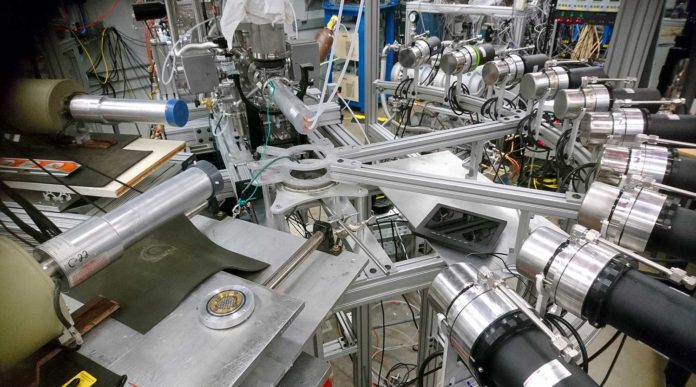A well-known nuclear reaction turns carbon-13 into oxygen-16 and a neutron. That same reaction is a significant contributor to background experiments that measure neutrinos, whether they are emitted from the sun, atmosphere, accelerators, nuclear reactors, or the Earth’s core.
The reaction rate must be well known to accurately calculate Background in detectors like Japan’s Kamioka liquid scintillator antineutrino detector, or KamLAND.
In a new study, physicists at the Oak Ridge National Laboratory have resolved disparity regarding the most generous patron of undesirable background signals in specialized detectors of neutrinos. They have identified a reaction with significant discrepancies between the new measurements and the historical data.
The old measurement from 2005 was taken by considering only the ground state of particles rather than a spectrum of the ground and excited states. Unlike the old measurement, this new measurement was taken using a detector array based on neutron spectroscopy and secondary gamma rays. And it also considered the entire spectrum of particle energies.
Scientists used a University of Notre Dame accelerator to shot an alpha particle (i.e., helium-4 nucleus) at a target of carbon-13, briefly forming oxygen-17, which decayed into oxygen-16 and a neutron. They then measured the cross-section or probability of a reaction taking place, proportional to the neutron production rate.
They found it quite strange- the current world data set is incorrect by quite a bit because they didn’t account for other reaction channels that turn on.
Using a special type of detector, scientists could know what neutron energy is. This was the leading enabling technology that made this measurement possible.
KamLAND weighs approximately a thousand tons. So, while carbon-13 accounts for only 1.1% of all carbon, KamLAND contains 10 tons of it. Radon entering the detector decays into daughter elements having different energies. The alpha particles produced by those decays interact with carbon-13, creating a background that overwhelms the neutrino signal. This was the main source of Background in these experiments.
The prime reference measurement of the reaction had measured nuclei only at the lowest energy level or ground state. However, nuclei live at higher energy levels as well, called excited states. Distinctive energy levels influence the probability that a reaction will take a particular way.
Using a setup that is susceptible to a spectrum of neutron energies, scientists significantly improved the precision and accuracy of measurements.
The global scientific community makes use of evaluated nuclear databases containing expert-generated, peer-reviewed reference measurements. To estimate KamLAND’s Background, KamLAND physicists pulled the 2005 reference measurement generated by nuclear physicists from one of these databases, the Japanese Evaluated Nuclear Data Library. They assumed the measurement was correct and plugged it into their calculations.
ORNL’s Michael Febbraro, a lead author of a study, said, “The assumption that the excited states don’t matter is not true. Including the excited states changes not just the size of the Background, it causes in KamLAND but also impacts multiple aspects of the neutrino signal.”
ORNL physicist Kelly Chipps, who helped analyze the data, said, “Background is something you have to understand precisely. Otherwise, the number of real events that you saw might be completely wrong.”
“The reference information in evaluated nuclear databases lets scientists estimate neutrino numbers.”
“It turns out that our experiment got a different answer than what the ‘candy manufacturer’ said the ratio should be. This isn’t because the manufacturer meant to give a wrong answer; it’s because their sorting machine was programmed with the wrong value.”
The new neutron-production rate was found by scientists working on KamLAND and other liquid-scintillator-based neutrino experiments to subtract Background with better accuracy and precision.
Febbraro said, “Since this new measurement, scientists employed the special detector to measure similar reactions. They have found discrepancies in neutron-production rates for half a dozen isotopes. Calculations in this mass region are not very reliable.”
Febbraro, who conceived the experiment and built the detectors, performed the measurement with Richard deBoer of the University of Notre Dame and Steven Pain of ORNL. Other co-authors represent the University of Surrey; University of Michigan, Ann Arbor; University of Tennessee, Knoxville; and Rutgers University.
Journal Reference:
- M. Febbraro et al. New C13(α,n)O16 Cross Section with Implications for Neutrino Mixing and Geoneutrino Measurements, Physical Review Letters (2020). DOI: 10.1103/PhysRevLett.125.062501
